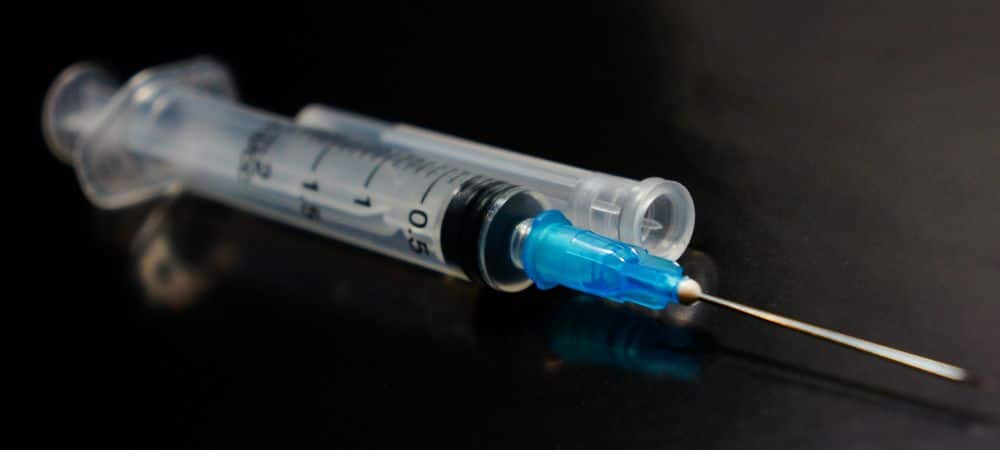Heroin is an illegal, highly dangerous opioid drug. Many addiction experts consider heroin to be one of the most hazardous and addictive street drugs. People who abuse heroin may face severe short and long-term consequences to their health, safety, and well-being.
There are several ways to use heroin. Injecting heroin has unique risks, including a higher rate of addiction or overdose.
This article will explore the dangers of injecting heroin. You will learn:
- The effects and risks of heroin abuse
- The dangers of shooting up heroin
- How to recognize IV heroin use
- What to expect in heroin addiction treatment
- Where to find treatment and recovery support
If you or someone you love struggle with heroin abuse or addiction, you are not alone. Contact the intake team at The Living Room to learn about our rehab and recovery programs. You may also verify your insurance or schedule an intake appointment.
What is Heroin?
Heroin is an illicit opioid drug. People create heroin using morphine, which is a byproduct of the opium poppy plant. Heroin is available in several forms, including a powder or a sticky, tar-like substance.
People use heroin by heating and injecting it, smoking it, or snorting the drug. Shortly after using heroin, people typically experience intense side effects that include:
- Euphoria
- Relaxation
- Drowsiness
- Pain relief
Heroin affects the brain’s pleasure and reward systems, which increases the risk of frequent use and addiction. People may develop psychological or physical dependence on heroin in a very short period.
What are the Dangers of Shooting Up Heroin?
All heroin abuse has the potential for harm. Some of the immediate risks associated with heroin use include:
- Excessive sleepiness
- Nausea
- Vomiting
- Slow heart rate
- Depressed (slow or shallow) breathing
- Nodding off (losing consciousness for a short period)
- Difficulty thinking or remembering things
- Heaviness in the limbs
- Dry mouth
- Intense itching
People who take heroin are also at risk of an overdose. An overdose may be life-threatening without immediate medical intervention.
Injecting heroin has additional short and long-term risks. People who inject drugs, including heroin, crack cocaine, and meth, may have higher rates of blood-borne infections. Other risks include:
- Heart lining infection
- Nerve damage
- Wounds that won’t heal
- Infection at the injection site
- Collapsed veins
- Abscesses
People who inject drugs may also have high rates of deadly overdoses.
Public health officials advise heroin injectors to engage in harm-reduction injecting practices. These may include using clean injecting equipment and injecting in a supervised environment.
Harm-reduction methods may reduce the risk of an overdose and other complications. However, seeking treatment for heroin addiction is critical. Heroin addiction treatment can help people stop using heroin safely. It can also give them the skills to prevent a relapse in the long term.
Recognizing IV Heroin Use
Heroin abuse can quickly spiral into a life-threatening addiction. Some addiction experts believe people can develop a physical dependence on heroin after just one use.
Heroin addiction can impact people of all socio-demographics. Recognizing IV heroin use is typically the first step toward getting life-saving treatment.
Some signs of IV heroin use include:
- Track marks (bruises or wounds around injection sites) on the arms, legs, or other areas of the body
- Sudden, dramatic weight loss or gain
- Neglected hygiene (not showering, wearing unclean clothing, neglecting dental care, etc.)
- Wearing long-sleeved shirts or pants year-round
- Exhibiting behavioral changes (sleep patterns, eating habits, increased isolation, dramatic changes in energy levels, mood swings, etc.)
- Finding paraphernalia (needles, syringes, burnt spoons, cotton balls, tourniquets, etc.)
People who inject heroin may take steps to hide their IV drug use. However, knowing these signs and watching for them may help you identify IV heroin use. Then, you can seek treatment to help you overcome the complex roots of your substance use.
Treatment for Heroin Abuse and Addiction
Treatment for heroin addiction typically occurs in stages. First, people complete a detox program that consists of:
- Medications to reduce withdrawal symptoms and ensure safety
- Emotional support, including individual and group therapy
- Education
- Holistic therapies like mindfulness, nutrition support, and yoga to soothe the mind and body
- Round-the-clock supervision and access to care
Detox treatment allows people to stay safe and on track in the earliest stages of their recovery. Research shows people who participate in an inpatient detox program have better long-term outcomes.
After detox, people must continue treatment. A comprehensive treatment program provides tailored support. This support allows people to address the behavioral, psychological, and physical aspects of their addiction.
A comprehensive addiction treatment program may include:
- Behavioral therapies
- Medication management and medical treatment
- Individual, group, and family counseling
- Relapse prevention education
- Holistic therapies, including creative expression, mindfulness, exercise, and more
- Aftercare planning and support
Overcoming IV heroin abuse can be very challenging. However, having the right kind of support can help people overcome addiction and move forward.
Find Treatment Now
If you or someone you love struggles with heroin abuse or addiction, you are not alone. Compassionate, holistic treatment programs are available at The Living Room. Contact our intake team to learn more about our comprehensive treatment and recovery support programs. You may also reach out with questions or to schedule an intake appointment.
References:
- National Institute on Drug Abuse (NIDA): Heroin Research Report
- National Institute of Health (NIH): Comparing Injection and Non-Injection Routes of Administration for Heroin, Methamphetamine, and Cocaine Uses in the United States
- JAMA Network: Reported Heroin Use, Use Disorder, and Injection Among Adults in the United States, 2002-2018


